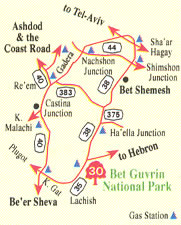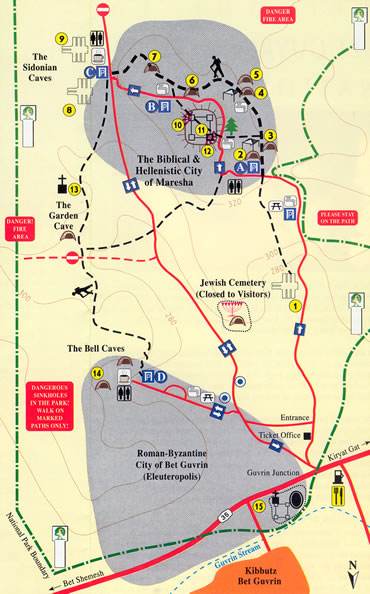Maresha is mentioned among the cities of Judea noted in Joshua 15 :44 ("... and Mareshah"), and as one of the cities fortified by Rehoboam against the incursion of Babylon into his kingdom: 'And Rehoboam built cities for defence in Judah.He built even Bethlehem ... and Mareshah ..." (Chronicles 2, 11 i 5-8). At the beginning of the 9th century B.C.E., Zerah the Ethiopian attacked Judea and engaged King Asa in the Maresha area: "And there came out against them Zerali tlhe Ethiopian ... Asa went out against him, and they set the battle in array in the valley, Zepphathah to Mareshah" (Chronicles 2,14:8-10).
During the Persian period, after the destruction of the First Temple, Maresha and all of southern Judea was settled by Edomites, who came from the southeast. At the end of that period (in the 4th century B.C.E.), Sidonians and even Greeks came to Maresha, bringing the Hellenistic culture with them. In additional, isolated Egyptians and a few Jews lived there - refugees from the fall of the Temple and emigrants from the Coastal Plain. Thus was created the special fabric of society in this Hellenistic city, which was an important economic center. During the same period, the Lower City was built, and in it many caves were hewn..
From historical sources and local excavations it became evident that in 113/112 B.C.E., John Hyrcanus I, the Hasmonean, conquered Maresha and converted the residents of the city and its surroundings to Judaism. The upper and lower city became desolate ruins. However, Maresha recovered and was repopulated, but its settlement was sparse, and according to Josephus Flavius, it was finally demolished by the Parthian Army in 40 B.C.E. |



